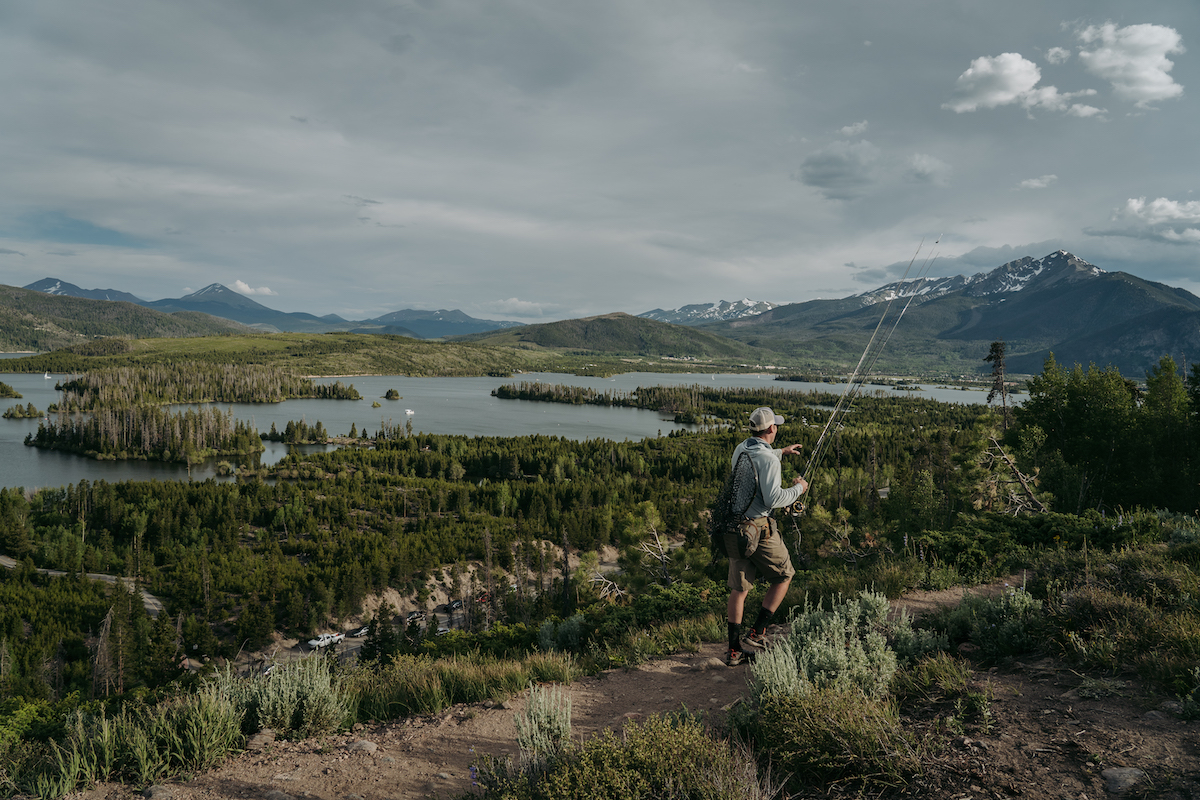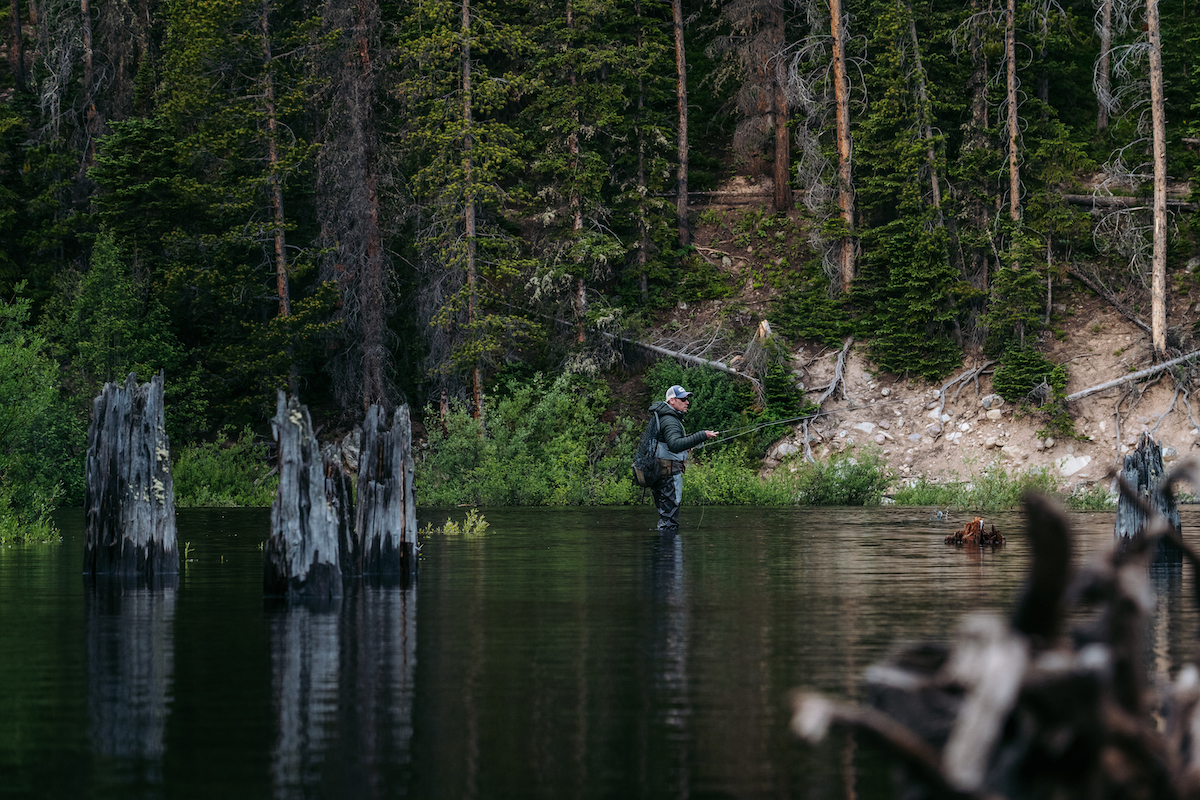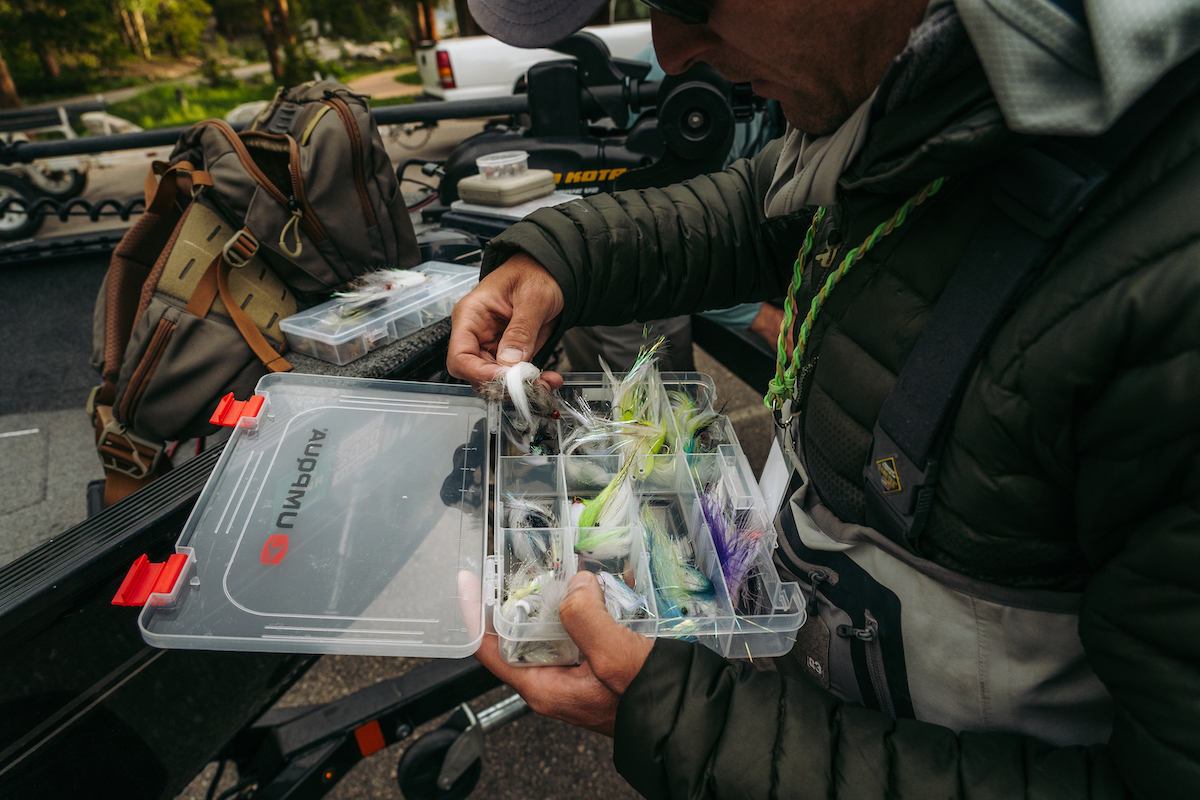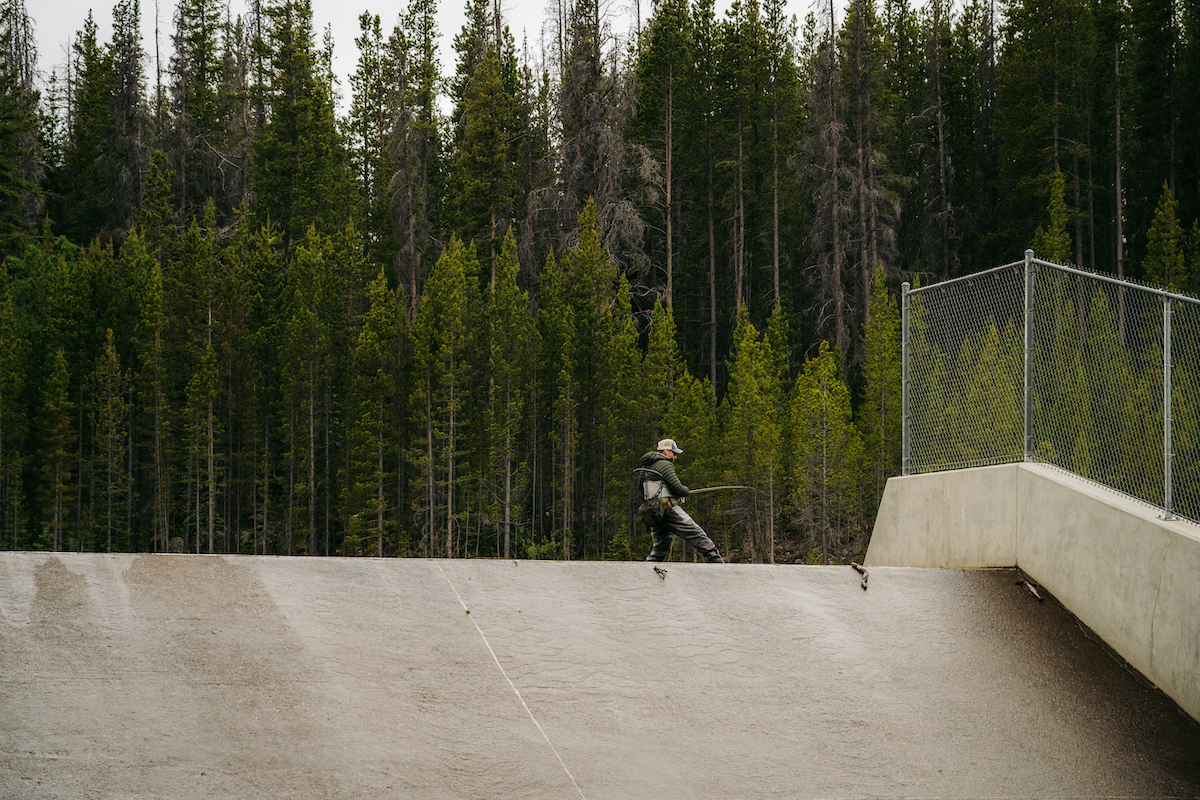
The "W" Word: Tips on fly fishing in the wind on stillwaters with Matt Winkler
The "W" Word
By Signature Tyer Matt Winkler

For many anglers fishing stillwater can be a daunting task in itself, but throw in some wind and the idea of fishing a several thousand acre reservoir in a stiff breeze just sounds idiotic.
Everybody dreads saying it and fishing in it even less, but with proper preparation and some (um, I mean a lot) practice fishing in the wind can become a non-issue, actually enjoyable and often times can lead to downright insanely good fishing.
I’ve compiled a list of tips to help overcome the W word and also some reasons why you should be fishing in the WIND.

1. Rod & Line Selection are Critical:
Fish fast action rods. A medium or slow rod is going to give you 0 advantages in windy conditions. You need a rod that will recover very quickly, can create high line speed and can handle fly lines with heavy front ends.
Fish a heavier weight rod. If you normally fish a 5 or 6, bump up to a 6, 7 or even an 8 in windy conditions. A heavier rod casts a heavier weight line and a heavier weight line will carry much better into the wind.
Fish a heavier floating line, but don’t make the mistake of automatically overloading your rod by one line weight. Most fly line manufacturers have already done this for you and have options in floating lines that are .5 – 1 line weight above the industry standard that are more heavily weighted toward the front; perfect for loading a fast rod and punching into a head wind.
All of the above kind of goes without saying, but being prepared is the first step to being successful in the wind and can often be the difference between going home defeated and staying on the water catching fish.
2. Ditch the Floating Line When Pulling Flies:
When pulling flies in the wind switch to an intermediate line; fly lines that sink at a rate of 1.5 – 2 inches per second (ips). This is one of the best advantages you can give yourself while trying to deal with the wind.
Intermediate lines sink enough to get the entire fly line under the chop and waves. With the fly line underneath the surface you are in constant contact with the fly the entire retrieve. This type of line is also very sensitive, you know instantly if a fish eats your fly. Floating lines do the opposite. In the wind they form a series of S’s on the surface and every time you strip all you’re essentially doing is pulling out the slack. It is very hard to feel the fly or even know where it is; on any one cast you could potentially miss several eats and never know it.
Additionally, sinking lines have a heavier head weight than even a heavy floating line at the same line weight. This additional weight will help load your rod deeper, quicker, with less effort and will carry much better into the wind.
3. Simplify Rigs & Upsize your Leader and Tippet:
Fishing both a stagnant indicator rig and pulling flies can often lead to many buggered rigs and headaches in the wind. Do yourself a favor by upsizing your leader & tippet and simplifying your rigs.
When fishing an indicator rig in big wind I will often fish a 0x Umpqua Perform X leader with 1x or 2x Phantom X tippet. I often ditch multi fly rigs and go with one confidence fly under the indo; without question that is the Balanced Leather Leech for me.
When pulling flies the same advice holds true, but you can fish a much shorter fluorocarbon leader, I’ll often fish a leader as short as 6’. Again, one confidence fly over multiple flies.
In a nutshell, heavier leader and tippet will turn over better in the wind and fewer flies on either rig will tangle less. Both will lead to more time with flies in the water and less time untangling knots.
4. Use the Wind to your Advantage:
You don’t always need to fight the wind; you can often use it to your advantage. If you can locate an area of the lake where the wind is blowing parallel to the shoreline you can fish a stagnant indictor rig and use the current created by the wind. You can often walk the shoreline, mending and retrieving any slack, but keep the flies in the water for a long time without having to recast.

Why you Should be Fishing in the Wind:
1. Mudlines – Temporary Cover
When the wind blows it will often create mudlines, areas of dirty water that meet cleaner water. Fish will often sit in the dirty water on the edge and use it as cover to ambush prey swimming in or out of the area. I prefer to pull flies through the mudlines as the fish are often very aggressive at this time. Several stand out flies for me in this situation are the Shock Collar Leech in black/chartreuse & peacock/orange and the Sparring Partner in black/purple & white/gold.
2. Concentrates Food
With everything being pushed into particular areas of the lake you can bet there will an abundance of food in a concentrated area. Fish of all sizes will move in to eat the food available. This holds true for many other species besides trout, especially where baitfish are present. Baitfish will move in to eat and species like walleye, wiper, pike, musky, striper, large & smallmouth bass, etc. will be right behind them. Fishing very wind-blown areas can be a good way to locate big fish.
3. Chop Creates a Ceiling
With a good chop on the surface fish feel more secure. Wind creates cover for fish by breaking up the surface and they feel safer from any aerial attack from things like birds. They often move in much shallower, become very aggressive and are looking to eat during this period. I’ve caught plenty of fish at my rod tip pulling flies in windy conditions.
4. Short Casts
All of the above factors can create situations where the fish are extremely close to shore. Do yourself a favor and concentrate on the water closer to you. There is no need to be trying to cast 70-80’ and wade very deep if the fish are eating right in front of you.
Find Matt on Instagram @matt.winker48 or at Charlie's Fly Box in Arvada, Colorado

